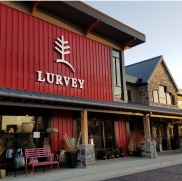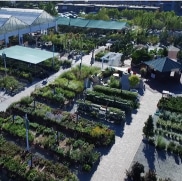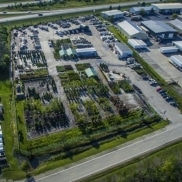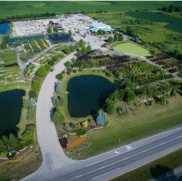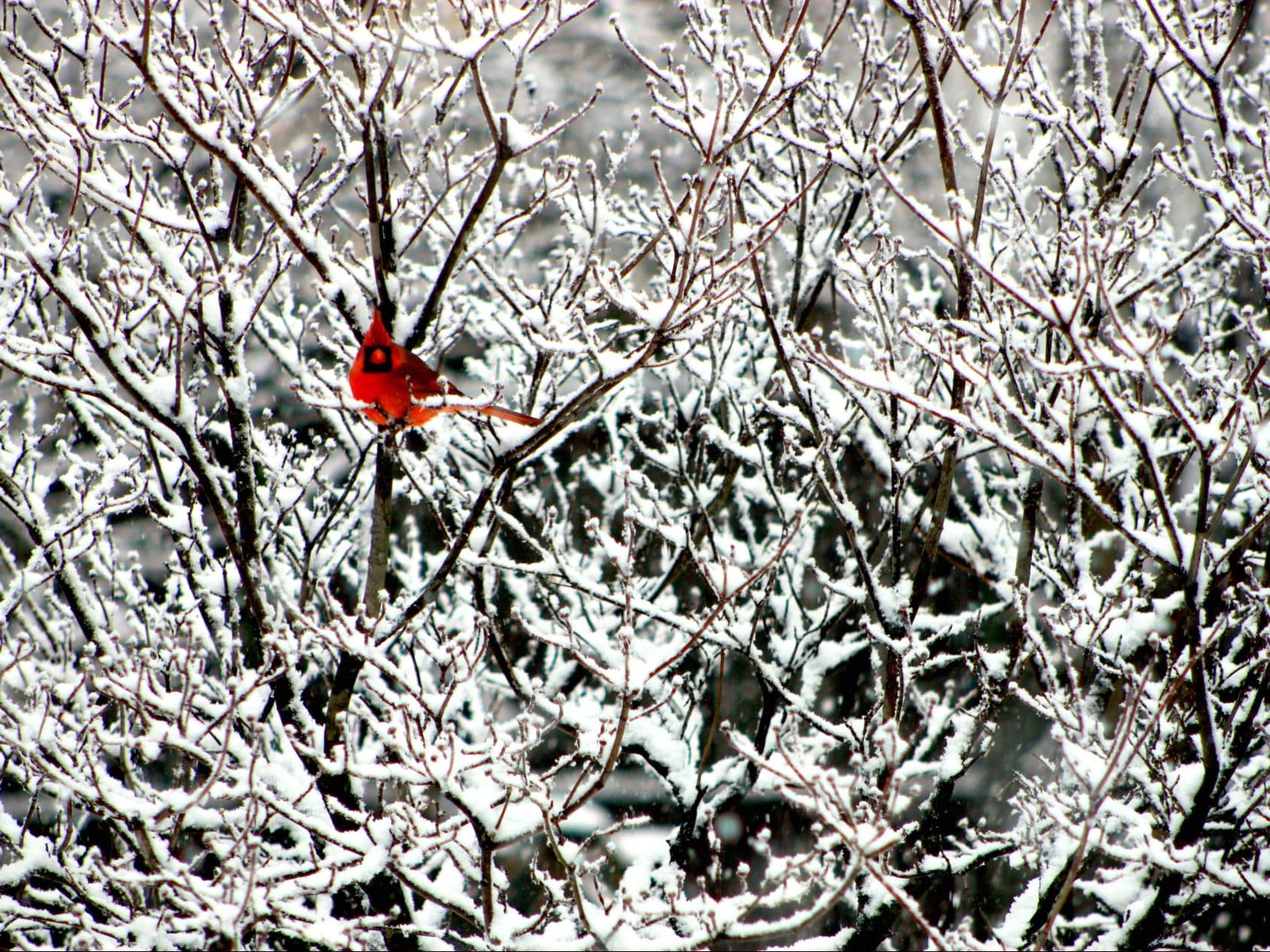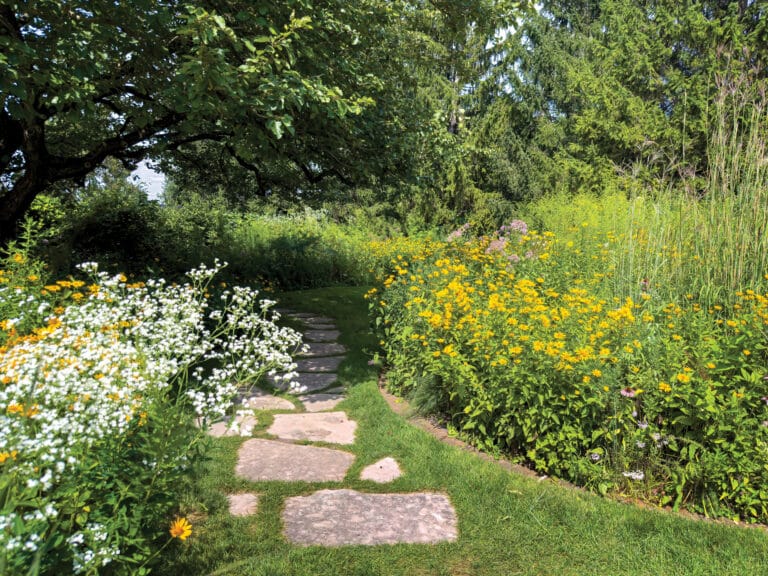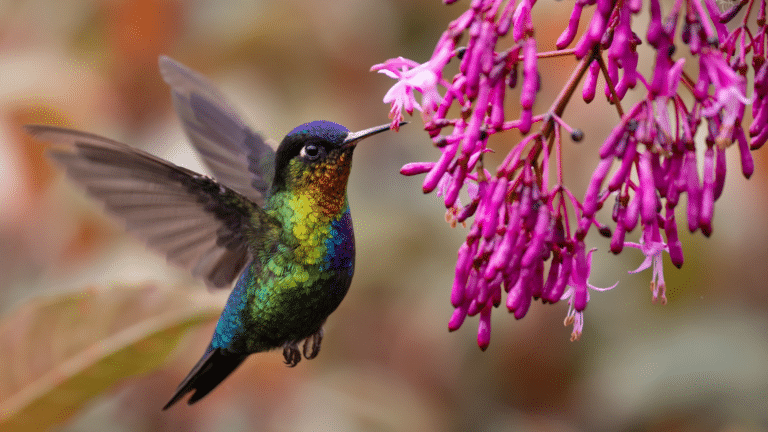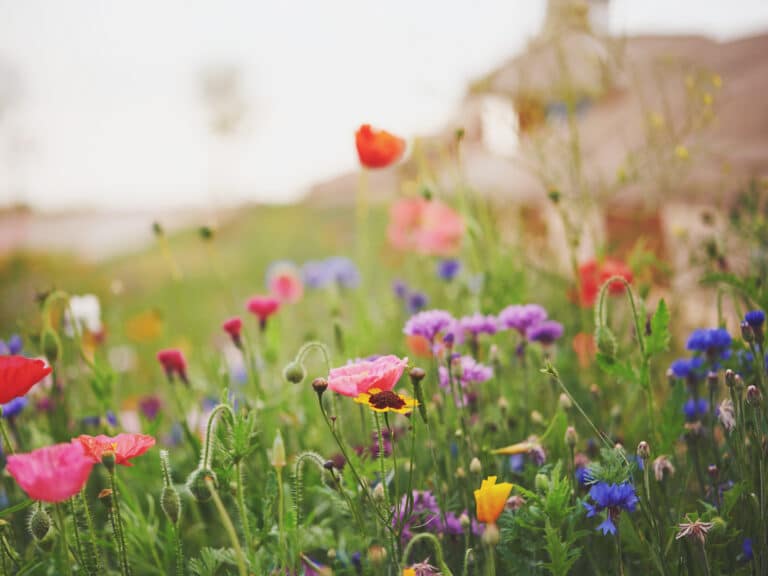Birds that do not migrate for the winter stay warm by growing more feathers, fluffing up feathers to keep heat in, huddling together, and slowing down their metabolism to conserve energy. There are three important things we can do to help birds be less stressed this winter – provide water, shelter, and food.
Water
Not only do birds need water to drink, but also to bathe, clean, and preen their feathers. This improves their insulation from the cold. We can help by adding a heater or de-icer coil to an existing bird bath or even by purchasing a bird bath with a built-in heater. It’s also important to keep the bird bath clean – scrub, rinse, and refill – checking the water daily.
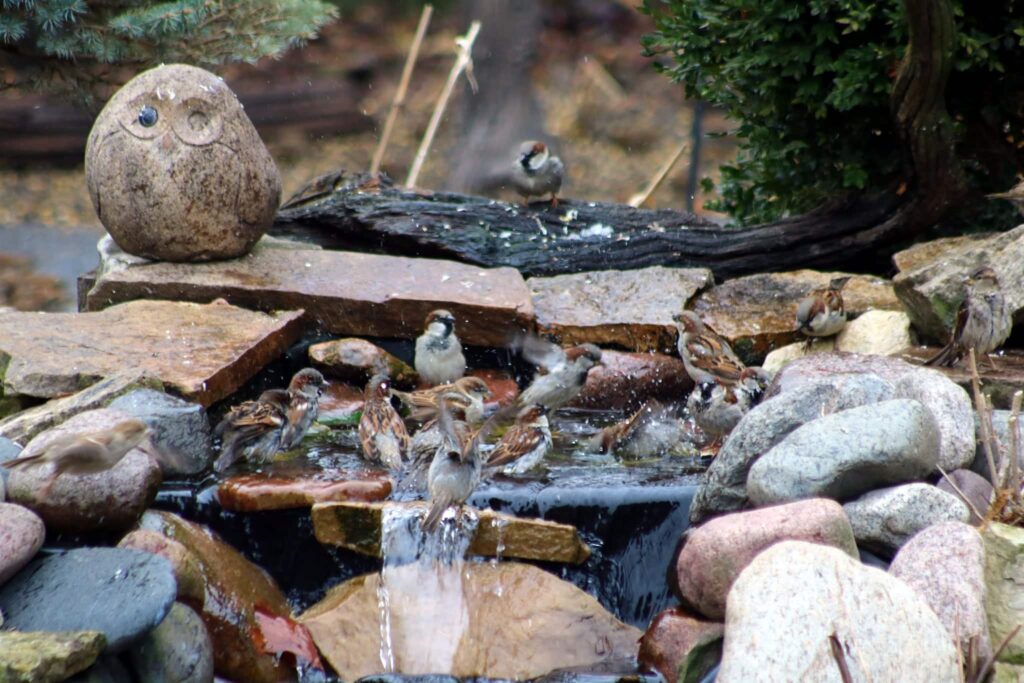
A pond or fountain running all winter will also provide moving water that will not freeze as fast. Try to keep an area 1/2” to 2” deep for the birds to drink and bathe in. If you are looking for a DIY project make your own above-ground pond with a tub, rocks for a 1” to 2” shallow area, and a pump for water movement.
Lurvey Pro Tip: Remember to clean snow from all water sources.
Shelter for birds
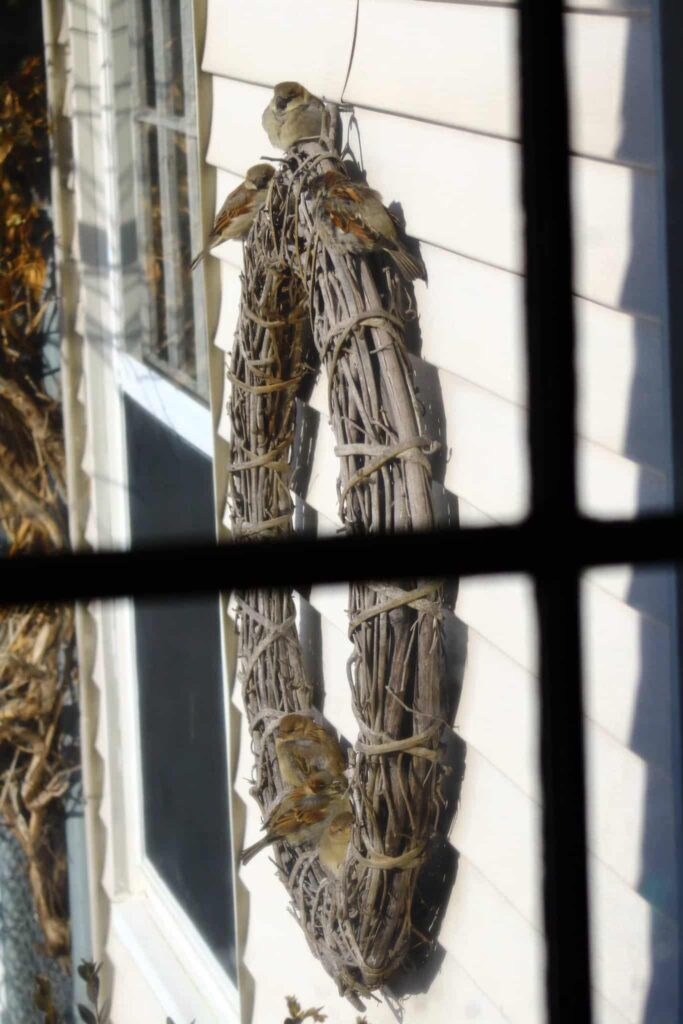
Trees, shrubs, and evergreens are the bird’s preferred shelters. Corn stalks, straw bales, and Christmas trees can also provide protection from snow and winds. Placing fallen leaves around the bases of trees and shrubs, not only helps the plants but provides a natural food source for birds of insects and worms who use it for their protection.
Lurvey Pro Tip: Prune these in spring to provide extra protection for winter. If you do prune during the year, save branches to provide winter brush cover.
Nesting houses, roosting pockets, birdhouses, and even empty hanging baskets from summer annuals (now filled with a little straw) also provide protection from winter weather.
Place them in areas that have a clear flight path to discourage predators. They should get direct sun for heat and be 5 to 10 feet above the ground.
Also, placing a grapevine wreath or perches on the south side of your house will reflect enough heat for birds to huddle on the coldest of days.
Food
Not all birds eat seeds and varied species eat different foods, so to attract the most variety of birds provide seeds, suet, fruit, nuts, peanut butter, corn, and berries. Black oil sunflower seeds are preferred by the largest number of bird species and provide high oil content, protein, fiber, and calcium. Most birdseed mixes contain sunflower, safflower, thistle, corn, and millet, which is a filler. Most birds leave the millet until the last. Suet, peanut butter, and nuts are a high source of protein, fat, and nutrition. These are not affected by rain or snow like birdseed is. Whereas seed waste should be cleaned up weekly, suet and nuts are typically consumed. Chopped apples and grapes cut to the size of sunflower seeds are also a natural food source. Place them in the feeders only when above freezing. Shrubs that have berries, perennials with seed heads, and evergreens are more natural sources of food. If you do not always feed the birds, the plants in your landscape can be a food source as well.
Feeders
Place feeders near trees, shrubs, evergreens, or anywhere that birds can feel safe and sheltered. Birds are easily frightened off by any movement or noise while eating or at a bird bath. Place feeders 5 or 6 feet from trees or fences so squirrels cannot jump to them. Also consider your view from inside the house or from the deck. Ensure you can see them and enjoy watching them on a frigid day, even from inside. After placing the feeders, you can adjust the locations based on how the birds react to them. When birds feel comfortable and safe, you can place more feeding areas closer to the house. If you choose multiple feeders, place them at different heights and in different areas to prevent overcrowding.
Different Types of Feeders
- Tube feeders – Keep seeds out of the elements and are available with many size openings for regular or thistle seeds. They have perches and are designed for smaller birds.
- Hopper feeders – a covered feeder with glass on the sides. Food is protected from the elements and has a long perch for small and medium size birds.
- Hanging platform feeder – open with a mesh base and small sides to keep seed in. It is not covered and attracts all varieties of birds. A DIY platform feeder is easy to make.
- Squirrel-proof feeders – hopper or tube feeders that can be placed in trees with little fear of squirrels eating all the food. Ground feeding – Some birds like doves, chickadees, and sparrows like to eat from the ground. Setting up an area with lawn fabric on the ground is ideal for this. The seed will not sprout on the ground, is easy to clean up with a broom, and you can contain the seed in a specific spot. You can also set up poles or hooks for the feeders with fabric underneath for a dedicated bird area. Squirrel baffles on the poles prevent them from reaching the feeders. However, they will feed on the seed on the ground.
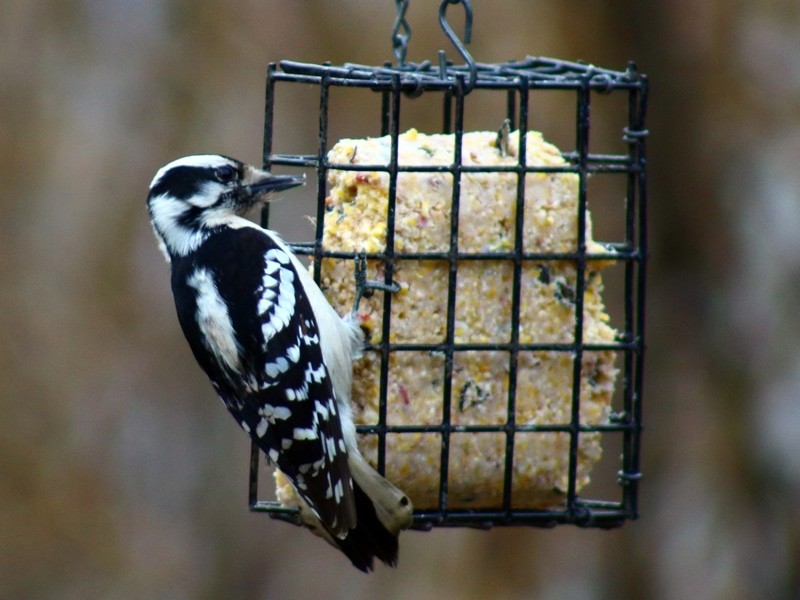
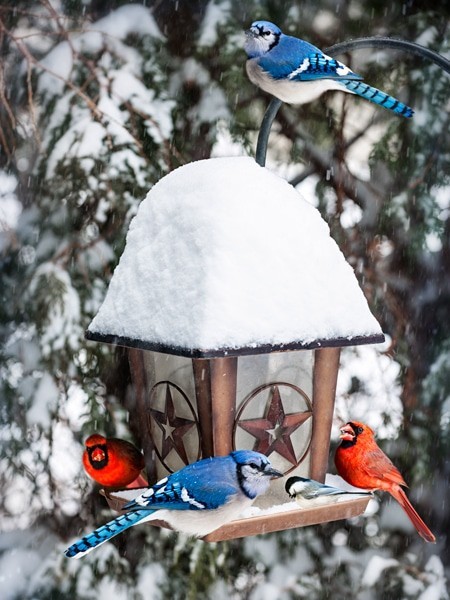
How and When to Feed
Feed the birds in the morning. Since they used energy to stay warm at night most birds need to recover early. At dusk, doves, cardinals, and woodpeckers feed for night energy. Put out lesser amounts of seed at first, enough for the day depending on the number of birds you attract. They like fresh, dry food, and avoid wet soggy food. Once you have established a routine of feeding, the birds will be waiting for you. If no birds are at the feeders, then look for a hawk or other predator nearby. Hawks are also attracted to the feeders but not to the seeds.
The last thing to do for the birds during winter is to watch and enjoy the beauty of nature in your backyard.
